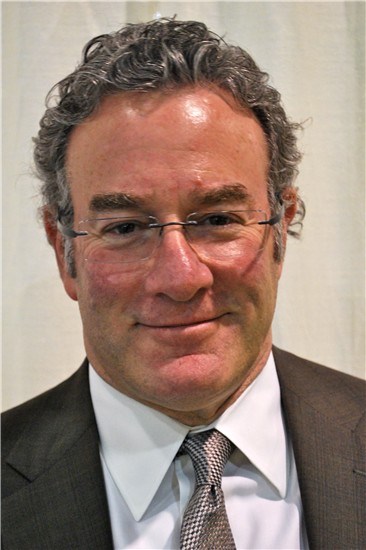Sponsored Content

By Bob Schultz
CEO, Vision One Credit Union
Jan. 6, 2021
One of the critical safety nets overlooked by many practices is maintaining the appropriate cash level in the practice bank accounts. This is known as “Working Capital.” Lack of working capital is the leading cause of business failure.
Inadequate working capital can lead to the following negative situations:
• You can’t pay your bills on time
• Delays in production and delivery of your products to patients
• Employees don’t get paid on time
• You don’t get paid
The role of working capital is to support ongoing expense payments and emergency practice cash requirements. Working capital allows you to sleep better at night because you know practice expenses are covered.
The need for working capital arises from many causes.
– Seasonality – Each practice has fluctuating revenue and cash flow over the course of the year. Lows usually include summer and the first few months of the year. Cash flow might even go negative for certain practices in low months.
– Special purchases – A good example is purchasing close-out frames that require a large upfront cash expenditure.
– Temporary disruptions in cash flow – This is generally due to internal issues such as reduced number of exams, low capture rate, decreased dispensary sales and/or billing and collection problems. Another example is when a key person goes on vacation then cash flow is negatively impacted a few weeks later.
– Longer-term changes in cash flow – Sometimes there are external changes impacting the practice such as increased competition, local unemployment trends, a recession and/or difficulty getting on (or loss of provider status) a third-party panel.
– Reduced open hours or temporary closure due to “Acts of God” such as: earthquakes, fires, floods, tornadoes, hurricanes and pandemics. Many of these items are partially covered by business interruption insurance up to certain limits. Others may be covered by government disaster programs and sometimes they are just not covered at all.
How to Determine the Appropriate Amount of Working Capital
An easy way to express working capital levels is in terms of months of overhead expense. A typical well-run practice will average 57 percent overhead expense to collected revenue. This includes 42 percent of general overhead (e.g.: staff salaries, rent, operating expenses) plus 15 percent OD expense with owner-ODs priced at the prevailing associate wage. Therefore, a practice with $1,000,000 revenues will generally incur $570,000 overhead expenses per year. Divided by 12, this equals $47,500 overhead expense per month.
Each practice should set the number of months of overhead in cash that should be maintained in the practice. At a minimum, this should be two months, or in the example used, $95,000 ($47,500 x 2). If you like to express it in terms of annual revenues, this would be 9.5 percent ($95,000 / 1,000,000) of the gross revenue collected.
Each practice has its own seasonal cycle that may require more or less working capital. However, the other working capital factors identified above may require additional working capital above the two months minimum. For example, closure for two months due to the pandemic depleted most practices available cash. You cannot rely on the government to bail out all businesses all the time, especially if it is a regional or local issue.
One big mistake made by some practices is to rely on a bank line of credit instead of working capital. I am sure you recall what happened when lines of credit were terminated by the banks in the last recession. They were cancelled due to risk and exposure the banks did not want. During the pandemic, lines of credit were also cancelled, and communications were cut off as big banks would not respond to their smaller customers, which included optometric practices.
Click HERE to open and use a spreadsheet we developed at Vision One Credit Union that shows the relationship between a decline in revenue and the impact on cash flow. You can put your own practice numbers in the model and then vary the revenue amounts to view a range of cash flow outcomes. Conversely, an increase in revenues can also be entered and the model will show the positive impact on cash flow. Remember, with increased revenues, there may be increased overhead costs, such as additional staff, that factor in. The financial principle of magnified impact on cash flow, given a change in revenue, is called “Operating Leverage.” It can work for you or against you, depending if revenues go up or down.
Action Plan
1) Calculate the amount of working capital needed in your practice.
2) Check to see how much working capital you have right now.
3) Create a plan to fix any shortage of working capital.
Here is how Vision One Credit Union and our practice checking accounts are different than a typical bank:
• Interest is paid on checking balances
• Primary checking earns rate reductions on practice loans
• Primary checking allows for premium interest paid on certificates of deposit
• We answer the phones because we know you call between patients or on your day off
• You have personal account representatives to speak with who are decision-makers
• We are the only financial institution that gives back to independent optometry
o All deposits are invested (loaned) solely to independent optometric practices
o We understand optometric practices and will provide a financial performance analysis of your practice to help spot negative trending and areas of improvement
o Our experience and staff skills allow us to internally produce complimentary practice financial education and management education
Our practice financial knowledge far exceeds other banks, as our entire business model is designed to enhance the financial performance of private optometric practices. We are owned by our depositors and our membership is limited to independent optometry only. Our board members are volunteers and private optometric practice owners. We are not for profit. We were founded by ODs for ODs. We are optometry’s bank.
Vision One LENDING SERVICES include:
Equipment Loans
Practice Purchase
Partial Practice Purchase
Renovation or Relocation
Purchase Practice Real Estate
If you are interested in LENDING SERVICES from Vision One Credit Union, click on the following link, or copy and paste it into your browsers: https://www.visionone.org/financing-solutions/lending-overview.
Vision One DEPOSIT SERVICES include:
Practice & Personal Checking
Money Market, CDs, & Savings Accounts
Personal Relationship Manager
Online & Mobile Banking
Visa Debit & ATM Cards
Electronic Transfers
If you are interested in DEPOSIT SERVICES, then click on, or copy and paste, this address into your e-mail, LSertic@VisionOne.org or call her at (916) 363-4293, X 3263.
Lika Sertic is the Manager of DEPOSIT SERVICES division at Vision One Credit Union.
 Bob Schultz is the CEO of Vision One Credit Union. To contact: BSchultz@visionone.org
Bob Schultz is the CEO of Vision One Credit Union. To contact: BSchultz@visionone.org

























